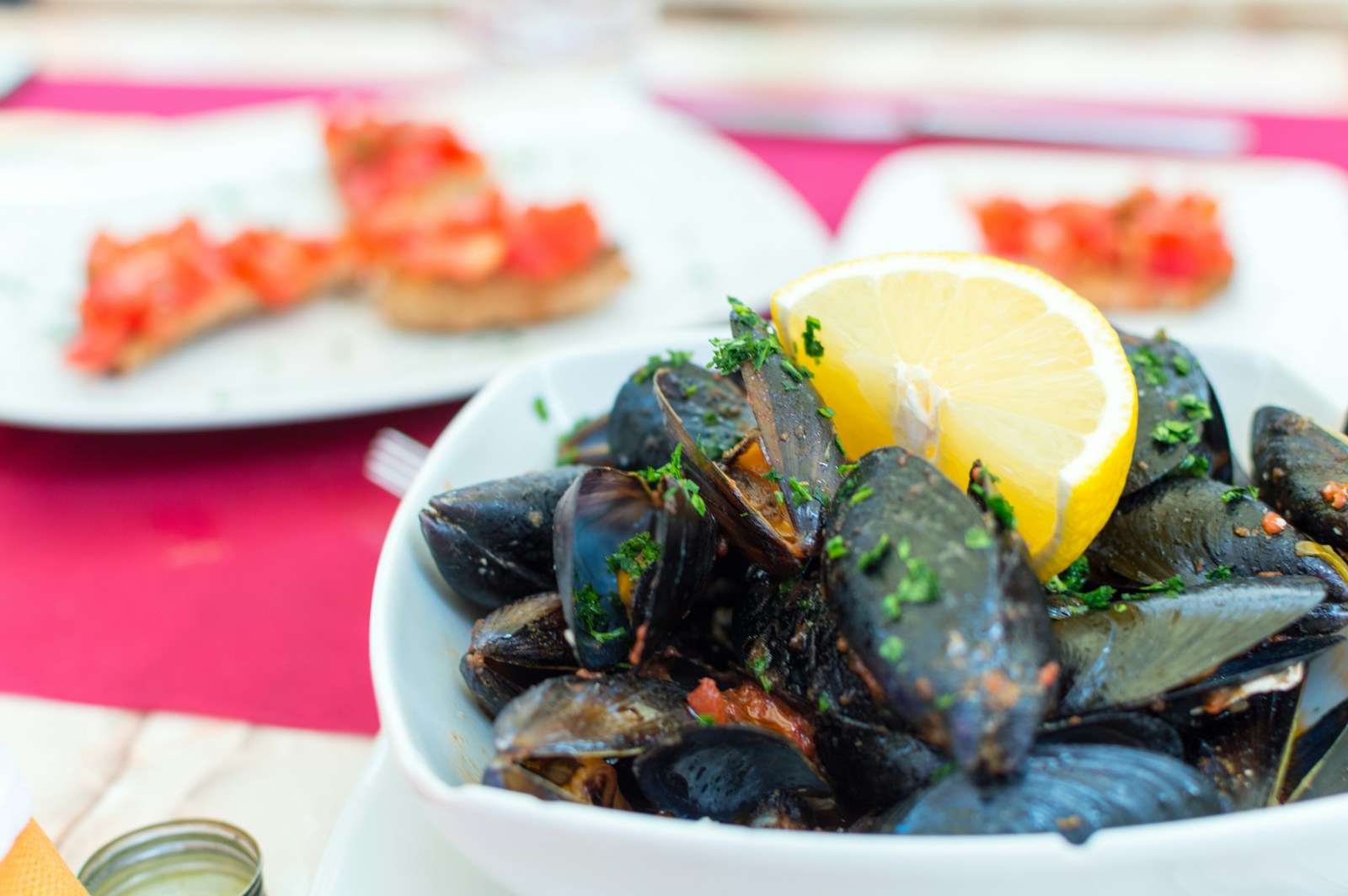Pregnancy is a time of significant change, not only for the body but also for dietary habits. Expectant mothers often find themselves navigating a sea of advice on what to eat and what to avoid to ensure a healthy pregnancy and the optimal development of their baby. One of the common questions that arise during this period is whether it is safe to eat seafood and fish. Given the rich nutritional profile of seafood, which includes essential omega-3 fatty acids, high-quality protein, and important vitamins and minerals, it seems like an ideal food group for pregnancy. However, concerns about mercury contamination, foodborne illnesses, and potential risks make this a complex issue.
In this comprehensive guide, we will delve into the benefits and potential risks associated with consuming seafood during pregnancy. We will also provide clear guidelines on how to safely incorporate seafood into your diet, ensuring that you and your baby reap the maximum health benefits without exposure to unnecessary risks.
The Benefits of Eating Seafood and Fish During Pregnancy
1. Omega-3 Fatty Acids: Crucial for Fetal Development
One of the most compelling reasons to include seafood in your pregnancy diet is the presence of omega-3 fatty acids, particularly DHA (docosahexaenoic acid) and EPA (eicosapentaenoic acid). These essential fatty acids play a critical role in the development of your baby’s brain and eyes. DHA, in particular, is a major structural component of the brain and retina, and adequate intake during pregnancy is associated with better cognitive development and visual acuity in infants.
Research has shown that omega-3 fatty acids contribute to the formation of the fetal nervous system and support overall brain development. Studies have linked higher maternal intake of DHA during pregnancy to improved cognitive outcomes, including higher IQ scores and better memory function in children. Additionally, omega-3s are believed to help reduce the risk of preterm birth, which is a significant concern during pregnancy. Preterm birth is associated with a range of complications, including respiratory issues, developmental delays, and a higher risk of chronic health conditions later in life.
Moreover, omega-3s have anti-inflammatory properties that can benefit the mother’s health as well. During pregnancy, inflammation is a common issue that can lead to discomfort and complications. Omega-3s help modulate the immune response, potentially reducing the risk of inflammatory conditions and supporting overall immune health. They may also play a role in preventing postpartum depression by influencing the production of neurotransmitters that regulate mood.
2. High-Quality Protein: Building Blocks for Growth
Protein is an essential macronutrient during pregnancy, as it supports the growth and development of fetal tissues, including the brain. It also plays a crucial role in the expansion of the mother’s blood supply, which is necessary to nourish the growing baby. Seafood is an excellent source of high-quality, easily digestible protein, providing all the essential amino acids that your body needs.
Including a variety of protein sources in your diet is important for ensuring that you and your baby receive the necessary nutrients to support healthy growth. Fish and seafood offer a lean source of protein, with relatively low levels of saturated fat compared to other animal protein sources like red meat. This makes seafood a heart-healthy choice for pregnant women, particularly for those who may be managing gestational hypertension or pre-existing cardiovascular conditions.
In addition to its role in fetal development, adequate protein intake is crucial for maintaining the mother’s muscle mass and strength during pregnancy. As the body undergoes significant changes, including weight gain and shifts in the center of gravity, maintaining muscle strength helps support the skeletal structure and reduces the risk of injury or discomfort.
3. Essential Vitamins and Minerals: Supporting Maternal and Fetal Health
Seafood is also rich in several vitamins and minerals that are vital during pregnancy. For instance, many types of fish are excellent sources of vitamin D, a nutrient that plays a key role in calcium absorption and bone health. Vitamin D is essential for the development of the fetal skeleton and helps prevent bone-related complications in the mother, such as osteomalacia (softening of the bones).
Iodine is another critical nutrient found in seafood, particularly in saltwater fish. Iodine is essential for the production of thyroid hormones, which regulate metabolism and are crucial for the baby’s brain development. Iodine deficiency during pregnancy can lead to serious complications, including cretinism, a condition characterized by severe intellectual disability and stunted growth in infants. Ensuring adequate iodine intake through seafood can help prevent these outcomes.
Zinc, another important mineral found in seafood, supports cell growth and immune function. It plays a role in DNA synthesis and protein production, which are critical processes during pregnancy. Adequate zinc intake is associated with reduced risk of preterm birth, lower incidence of infections, and improved birth weight. Additionally, zinc is important for wound healing and maintaining skin integrity, which can be beneficial for the mother as her body undergoes significant changes during pregnancy.
Iron is another essential nutrient that can be found in certain types of seafood, particularly shellfish like oysters, clams, and mussels. Iron is crucial for the production of hemoglobin, the protein in red blood cells that carries oxygen to tissues. During pregnancy, a woman’s blood volume increases significantly, raising the demand for iron. Insufficient iron intake can lead to anemia, which is associated with fatigue, increased risk of infections, and complications during labor and delivery.
Potential Risks of Eating Seafood During Pregnancy
1. Mercury Exposure: Understanding the Risks
While the nutritional benefits of seafood are substantial, one of the primary concerns regarding its consumption during pregnancy is mercury exposure. Mercury is a heavy metal that can accumulate in the tissues of fish, particularly in larger predatory fish that are higher up the food chain. Mercury can cross the placenta and accumulate in the fetal brain, where it can interfere with the development of the nervous system. High levels of mercury exposure during pregnancy have been linked to developmental delays, cognitive deficits, and motor skill impairments in children.
The FDA and EPA have provided guidelines to help pregnant women minimize their exposure to mercury while still enjoying the benefits of seafood. It’s important to be selective about the types of fish you consume, avoiding those known to have high mercury levels. These include:
- Shark
- Swordfish
- King mackerel
- Tilefish
- Bigeye tuna (often found in sushi)
By avoiding these high-mercury fish, you can significantly reduce the risk of mercury exposure. Instead, focus on consuming fish that are lower in mercury and rich in omega-3 fatty acids, such as salmon, sardines, and trout.
2. Foodborne Illnesses: Protecting Against Contamination
Another concern with seafood consumption during pregnancy is the risk of foodborne illnesses. Pregnant women are at a higher risk of contracting foodborne illnesses due to changes in the immune system that occur during pregnancy. Certain bacteria, viruses, and parasites found in raw or undercooked seafood can pose serious health risks to both the mother and the developing baby.
Listeria, a type of bacteria commonly found in contaminated food, is particularly concerning during pregnancy. Listeriosis, the infection caused by Listeria, can lead to miscarriage, preterm labor, stillbirth, or severe illness in newborns. The risk of listeriosis is higher in pregnant women because the immune system is naturally suppressed during pregnancy to tolerate the developing fetus.
To minimize the risk of foodborne illness, it is essential to ensure that all seafood consumed during pregnancy is thoroughly cooked. Fish should be cooked to an internal temperature of 145°F (63°C) and should appear opaque and flake easily with a fork. Avoid raw or undercooked seafood, including sushi, sashimi, and raw oysters, clams, or mussels. Additionally, be cautious with smoked seafood, which can also harbor Listeria unless it is canned or cooked as part of a dish.
Cross-contamination is another risk factor to be aware of. Ensure that raw seafood is handled properly and kept separate from other foods to prevent the spread of harmful bacteria. Use separate cutting boards and utensils for raw seafood and wash your hands thoroughly after handling it.
Guidelines for Safely Eating Seafood and Fish During Pregnancy
1. Choose Low-Mercury Fish: Safe and Nutritious Options
To enjoy the benefits of seafood while minimizing the risks, it is important to choose fish that are low in mercury. Some of the best options for pregnant women include:
- Salmon: Salmon is rich in omega-3 fatty acids and low in mercury, making it one of the best choices for pregnant women. It is also an excellent source of vitamin D and protein.
- Sardines: Sardines are packed with omega-3s, calcium, and vitamin D, and they have very low mercury levels. They are also an affordable and convenient option, as they are often available canned.
- Trout: Trout, especially farmed rainbow trout, is a great source of omega-3s and is low in mercury. It is also high in protein and vitamins like B12 and D.
- Herring: Herring is another fatty fish that is low in mercury and high in omega-3s. It also provides a good amount of vitamin D and selenium.
- Anchovies: These small fish are low in mercury and high in omega-3s. They are often used in salads, pizzas, or as a seasoning in various dishes.
When selecting seafood, it’s also beneficial to choose sustainably sourced fish. Overfishing and environmental concerns are important considerations, and choosing fish that are responsibly harvested can help support the health of our oceans.
2. Limit High-Mercury Fish: Know What to Avoid
As mentioned earlier, certain types of fish contain higher levels of mercury and should be avoided during pregnancy. In addition to avoiding shark, swordfish, king mackerel, tilefish, and bigeye tuna, it is also
advisable to limit the consumption of other types of tuna, such as albacore (white) tuna. The FDA recommends limiting albacore tuna to no more than 6 ounces per week.
If you are unsure about the mercury content of a particular type of fish, it is best to consult with your healthcare provider or refer to reputable sources like the FDA or EPA guidelines. Many grocery stores and fish markets also provide information on the mercury levels of the fish they sell, which can help you make informed choices.
3. Cook Seafood Thoroughly: Ensure Food Safety
To protect against foodborne illnesses, it is crucial to ensure that all seafood consumed during pregnancy is thoroughly cooked. Fish should be cooked until it reaches an internal temperature of 145°F (63°C). The flesh should be opaque and flake easily with a fork. If you are unsure whether the fish is fully cooked, use a food thermometer to check the temperature.
When dining out, be cautious with dishes that may contain undercooked seafood. Ask the server or chef about how the seafood is prepared, and if in doubt, choose another option. Avoid dishes like ceviche, which involves marinating raw fish in citrus juice, as this preparation method does not fully cook the fish and may not kill harmful bacteria or parasites.
4. Pay Attention to Portion Sizes: Balance Nutrient Intake
The FDA and EPA recommend that pregnant women consume 8 to 12 ounces (2 to 3 servings) of low-mercury fish per week. This amount provides the necessary nutrients without exposing you or your baby to harmful levels of mercury. It’s important to vary the types of fish you eat to maximize nutrient intake while minimizing any potential risks.
For example, you might have a serving of salmon one day, sardines the next, and trout later in the week. This variety ensures that you get a range of nutrients from different sources while keeping mercury exposure low.
If you are consuming fish that are known to have slightly higher mercury levels but are still generally considered safe in moderation (such as light canned tuna), be mindful of portion sizes and frequency. Limit these types of fish to occasional servings and ensure that they are part of a balanced diet that includes other sources of protein and nutrients.
5. Consider Omega-3 Supplements: An Alternative Option
If you are concerned about mercury or simply don’t enjoy eating fish, omega-3 supplements, particularly those derived from algae, can be a good alternative. Algal oil is a plant-based source of DHA and EPA that is free from the risk of mercury contamination. It is particularly suitable for vegetarians, vegans, or those with seafood allergies.
When choosing an omega-3 supplement, look for high-quality products that are third-party tested for purity and potency. Supplements should be taken according to the dosage recommended by your healthcare provider. It’s important to note that while supplements can help fill nutritional gaps, they should not completely replace a healthy, balanced diet that includes a variety of nutrient-rich foods.
Before adding any supplements to your routine, consult with your healthcare provider to ensure they are safe and appropriate for your specific needs. Your provider can help you determine the right dosage and advise you on any potential interactions with other medications or supplements you may be taking.
Conclusion
Seafood and fish can be incredibly beneficial for both the mother and the developing baby during pregnancy, thanks to their rich nutritional profile, which includes essential omega-3 fatty acids, high-quality protein, and important vitamins and minerals. However, it is crucial to make informed choices about the types of fish you consume and to follow guidelines for safe consumption.
By choosing low-mercury fish, cooking seafood thoroughly, and paying attention to portion sizes, you can enjoy the health benefits of seafood while minimizing the risks associated with mercury exposure and foodborne illnesses. If you have any concerns or questions about your diet during pregnancy, it’s always best to consult with your healthcare provider. They can provide personalized advice based on your individual needs and help you make the best choices for a healthy pregnancy.
Ultimately, the goal is to ensure that both you and your baby receive the nutrients needed for optimal health and development. With careful planning and attention to safety guidelines, seafood can be a valuable and enjoyable part of your pregnancy diet.




